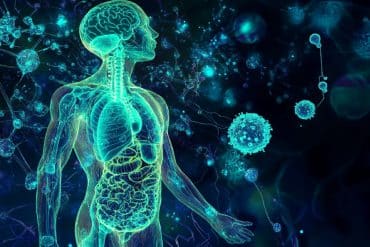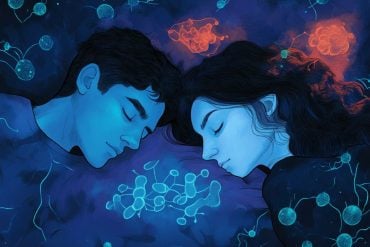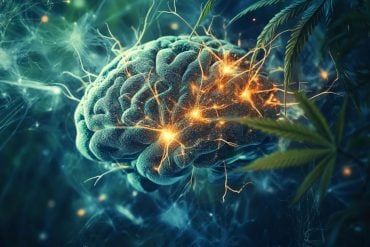Summary: A new study uncovers a unique aspect of human memory: our ability to recall events is sharper after experiencing negative emotions.
The researchers conducted experiments with participants who viewed images that elicited negative and neutral emotional responses. They found that memories following negative experiences were more accurately recalled than those preceding them.
This insight is crucial for understanding eyewitness testimonies, treating PTSD, and addressing memory decline in disorders like Alzheimer’s.
Key Facts:
- Negative events lead to improved recall of subsequent neutral events, but not preceding ones.
- This memory pattern has implications for eyewitness testimonies, suggesting sharper recall of events after a traumatic incident.
- The findings could aid in developing cognitive therapies for PTSD and combatting memory decline in Alzheimer’s disease.
Source: Beckman Institute
Halfway through a true crime podcast, a morning commuter jerks the wheel to narrowly avoid a collision. When discussing the podcast with a coworker later that day, the driver can easily recall the details of the episode’s second half but retains only a blurry recollection of how it began.
A new study from psychologists at the Beckman Institute for Advanced Science and Technology suggests that we remember the moments immediately following a distressing episode more sharply than the moments leading up to it.
Clarifying the relationship between trauma and memory can improve how we evaluate eyewitness testimonies, inform therapies to treat PTSD, and help clinicians combat memory decline in brain disorders like Alzheimer’s disease.

This study appears in the journal Cognition and Emotion.
“It’s a clean finding, and it opens up an entirely new dimension for understanding emotion’s impacts on memory,” said lead author Paul Bogdan, whose Ph.D. research at the University of Illinois Urbana-Champaign formed the basis for this study.
Bogdan’s research was conducted within the Dolcos Lab headed by psychology professors Florin Dolcos and Sanda Dolcos. For more than 15 years, the Dolcoses have studied the relationship between mental health and memory — specifically, unwanted memories that intrude into our daily lives, degrading mental health and aggravating anxiety, depression, and PTSD.
The result of their research is an emotional security system, crafted with cognitive therapies that protect emotional security and preserve focus in the face of troublesome recollections.
Studying traumatic memories is tricky, the researchers say, because our brains tend to auto-edit negative experiences. Big ideas trump details, peripheral features concede to central ones, and specific moments are cut loose from their context: the where, when, and “what else,” Florin Dolcos said.
So far, there is little evidence to explain how negative emotion impacts the when: our ability to situate a sequence of memories along a timeline.
“Suppose your partner unexpectedly insults you in the middle of an otherwise neutral discussion. Later, when you are trying to make sense of the encounter …, will you more accurately remember what happened before or after the insult?” Bogdan said. “Existing research does not give us a clear answer.”
But Bogdan’s new research might. His team orchestrated two identical experiments: an initial study of 72 participants to pin down their procedures and predictions, and a replication study with 150 participants to confirm the results.
First, participants viewed a series of images simulating a string of memories. Half of the images elicited negative emotional responses, and half were emotionally neutral.
To contextualize the images — and make them more memory-like — the participants were asked to privately imagine themselves traveling among the locations pictured and to craft a creative story arc to bind them together. This “promoted the feeling that pairs of sequential images are meaningfully related,” the researchers wrote.
An hour later, participants viewed pairs of images from the series. For each pair, they were asked whether the second picture occurred immediately before or immediately after the first. (They were also offered a “neither” option and could indicate if they did not remember the order.)
Results were consistent across both studies. The participants’ ability to accurately place the second image improved when the negative memories occurred before the neutral ones on the timeline. If participants were shown a negative image first, they did a better job of recalling neutral images that followed it; inversely, if participants were first shown a neutral image, they could more consistently place the negative images that came before.
In other words, memory flows from negative to neutral.
“So, our results suggest that if insulted in a conversation, one would better retrieve what was said immediately afterward than what was said immediately beforehand,” Bogdan said.
This is unintuitive, the researchers say.
“You might imagine that humans evolved to have a good memory for what led to negative things,” Bogdan said. “If you got bit by a snake, what foolhardy thing were you doing beforehand?”
One explanation is that negative emotional spikes (for example, upon sustaining a snake bite) cause a rush of focus and alertness, telling our brains to take exhaustive notes about what happens next and squirrel them away for future use.
But the prelude to trauma employs a much less diligent notetaker. This casts a dubious eye on scenarios like witness testimonies, where contextual details are paramount.
“Knowing that people are more likely to miss details leading to something negative that happened, we can be more cautious about statements related to events that have led to a crime, compared to memories of what happened after, which we know will be sharper,” Florin Dolcos said.
As relevant in a clinic as it is in a courtroom, these results help clarify the mechanisms behind PTSD, where an objectively neutral activity can trigger an involuntary surge of negative emotions.
“For example, a war veteran hearing a loud noise and inferring that their building will soon collapse due to an explosion,” Florin Dolcos said.
“This happens because there is a rupture between the memory of the traumatic experience and its original context: the what breaks from the where and the when.”
Taking back control over traumatic memories, then, requires reattaching them to their context — their original place and time. The researchers hope to incorporate this strategy into cognitive therapies for people with PTSD.
In addition to muting the maelstrom of negative memories, another therapeutic avenue may entail using positive emotions to reconstruct sturdier, sharper memories for those who need them, according to Sanda Dolcos.
“As people age, problems with memories become more serious, especially conditions like Alzheimer’s,” she said. “The memory for context suffers the most. If we know exactly what’s happening, we can build future strategies to better encode information that will help us help others with those conditions.”
About this PTSD and memory research news
Author: Jenna Kurtzweil
Source: Beckman Institute
Contact: Jenna Kurtzweil – Beckman Institute
Image: The image is credited to Neuroscience News
Original Research: Open access.
“Emotional dissociations in temporal associations: opposing effects of arousal on memory for details surrounding unpleasant events” by Paul Bogdan et al. Cognition & Emotion
Abstract
Emotional dissociations in temporal associations: opposing effects of arousal on memory for details surrounding unpleasant events
Research targeting emotion’s impact on relational episodic memory has largely focused on spatial aspects, but less is known about emotion’s impact on memory for an event’s temporal associations. The present research investigated this topic. Participants viewed a series of interspersed negative and neutral images with instructions to create stories linking successive images.
Later, participants performed a surprise memory test, which measured temporal associations between pairs of consecutive pictures where one picture was negative and one was neutral. Analyses focused on how the order of negative and neutral images during encoding influenced retrieval accuracy.
Converging results from a discovery study (N = 72) and pre-registered replication study (N = 150) revealed a “forward-favouring” effect of emotion in temporal memory encoding: Participants encoded associations between negative stimuli and subsequent neutral stimuli more strongly than associations between negative stimuli and preceding neutral stimuli.
This finding may reflect a novel trade-off regarding emotion’s effects on memory and is relevant for understanding affective disorders, as key clinical symptoms can be conceptualised as maladaptive memory retrieval of temporal details.







